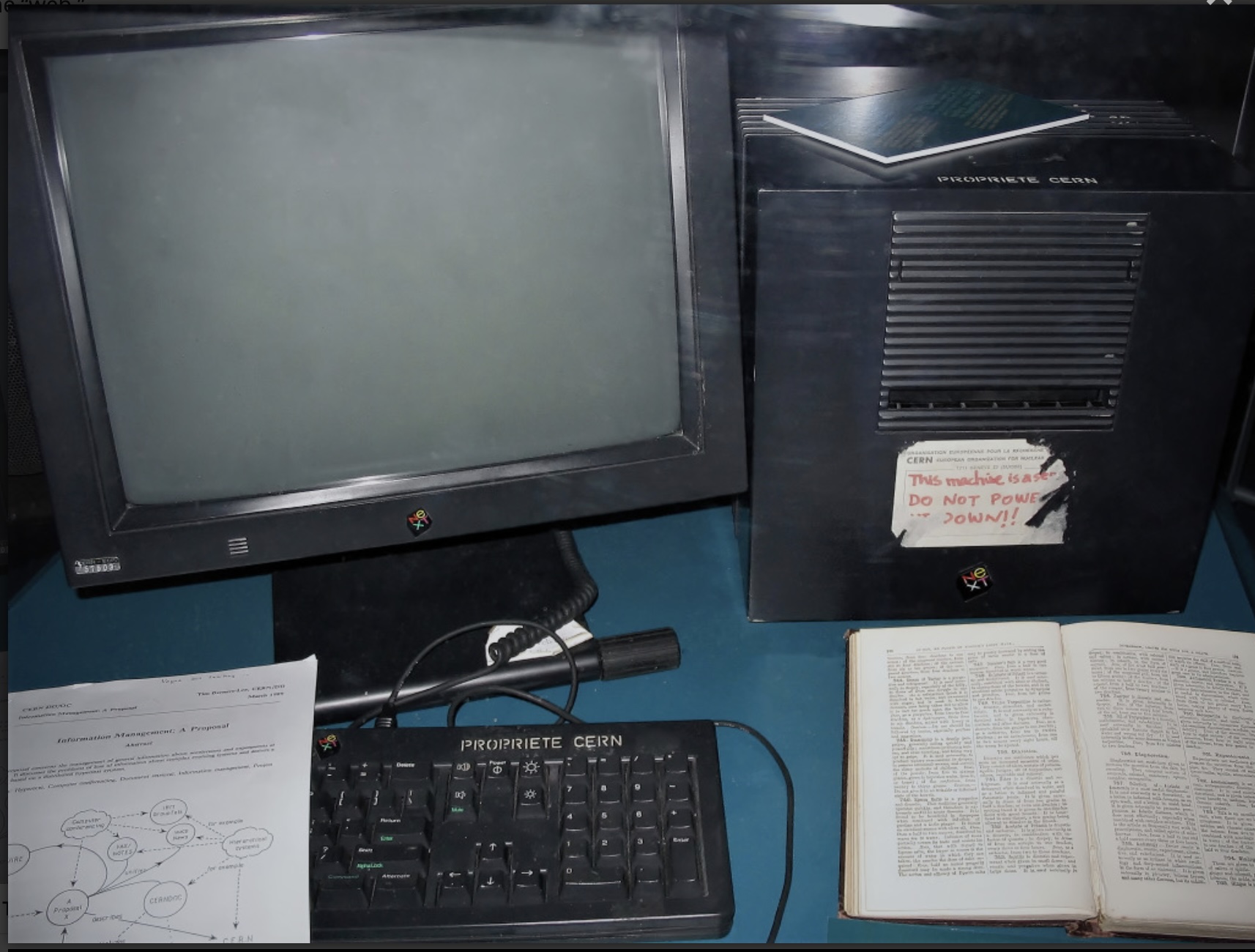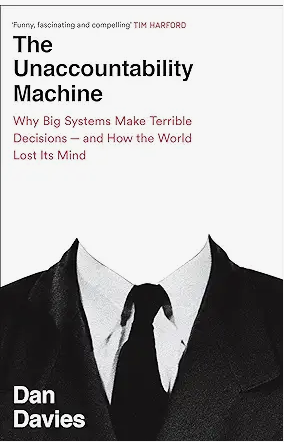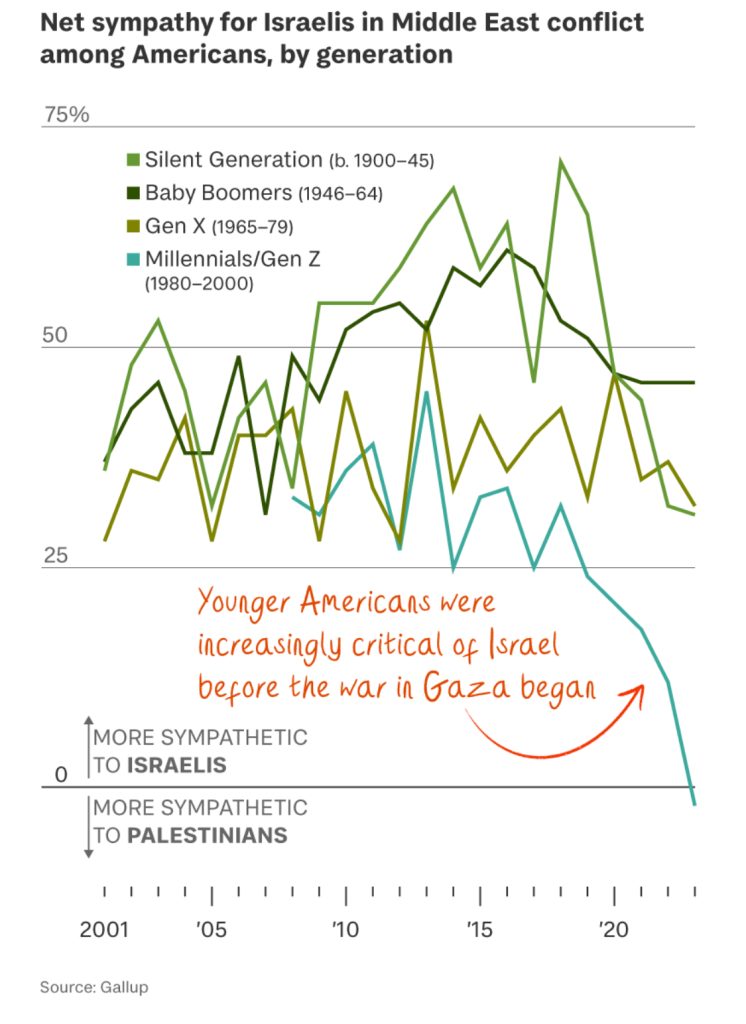Present at the Creation

Screenshot
This is a pic of the world’s very first Web server — Tim Berners-Lee’s NEXT machine at CERN. Note the handwritten note on the machine.
(Source: Jeremy Reimer on ArsTechnica.)
Quote of the Day
”The rain will stop, the night will end, the hurt will fade. Hope is never so lost that it can’t be found.”
- Ernest Hemingway
Musical alternative to the morning’s radio news
Scott Joplin | Solace | Phillip Dyson
Long Read of the Day
We Need To Rewild The Internet
This essay by Maria Farrell and Robin Berton in Noema is the best thing I’ve read in ages. It’s about how diversity was stripped out of the original Internet, and the perils of the resulting monoculture. It starts with the story of how, in the late 18th century, officials in Prussia and Saxony began to rearrange their complex, diverse forests into straight rows of single-species trees, and the ecological disaster that ensued.
The story of German scientific forestry transmits a timeless truth: When we simplify complex systems, we destroy them, and the devastating consequences sometimes aren’t obvious until it’s too late.
That impulse to scour away the messiness that makes life resilient is what many conservation biologists call the “pathology of command and control.” Today, the same drive to centralize, control and extract has driven the internet to the same fate as the ravaged forests.
The internet’s 2010s, its boom years, may have been the first glorious harvest that exhausted a one-time bonanza of diversity. The complex web of human interactions that thrived on the internet’s initial technological diversity is now corralled into globe-spanning data-extraction engines making huge fortunes for a tiny few.
Our online spaces are not ecosystems, though tech firms love that word. They’re plantations; highly concentrated and controlled environments, closer kin to the industrial farming of the cattle feedlot or battery chicken farms that madden the creatures trapped within.
We all know this. We see it each time we reach for our phones. But what most people have missed is how this concentration reaches deep into the internet’s infrastructure — the pipes and protocols, cables and networks, search engines and browsers. These structures determine how we build and use the internet, now and in the future…
It’s terrific, and worth your time.
Books, etc.

I’m reading Dan Davies’s new book and am blown away by it. In it he examines why markets, institutions and governments systematically generate outcomes that everyone involved claims not to want. From my point of view, the most interesting thing is the way he casts new light on the writings of Stafford Beer, a legendary thinker who argued in the 1950s that we should regard organisations as artificial intelligences, capable of taking decisions that are distinct from the intentions of their members. Since I’m working on a book about corporations as “Slow AIs” (as Charlie Stross calls them) this is right up my street.
Chart of the Day

From Tortoise Media’s newsletter:
The campus protests have revealed shifts in US opinion on Israel that have been developing for years. A 2023 Gallup poll found net sympathy towards Israel at +46 points among those born between 1946 and 1964; that drops to -2 among those born after 1980. In a 2021 survey of Jewish voters, respondents under 40 were twice as likely to agree that Israel is committing genocide against the Palestinians as those over 64.
In 2011 the American historian Daniel Rodgers published The Age of Fracture, an astonishingly perceptive book about how American society was changing in during the 1960s, 1970s and 1980s. His argument, neatly summarised by one reviewer (Doug Rossinow in The Journal of American History), was that
the major intellectual trends of the twentieth century’s last quarter, ranging from the ascendancy of microeconomics and market fundamentalism to the explosion of postmodernism in cultural theory, were of a piece. The weakening of social structures as perceived determinants of human life and the “thinning” of conceptions of society, to use a term favored by Rodgers, crossed inherited political boundaries.
What was so remarkable about the book was the way it tried to pin down subtle shifts that we often perceive only with the benefit of hindsight. My hunch is that we’re now living through another period of major cultural change and the best we can do is to catch glimpses of things that might yield clues to what’s happening.
IMO, the response of US students (and of citizens in a raft of Western democracies like Ireland) to the Hamas atrocity — and the Israeli response to it — is one of those clues. And it has taken the ruling elites of these societies completely by surprise. After the atrocity, the prevailing expectation was that the West would fall into line behind Netanyahu’s policy (even while collectively holding its nose). That has kind-of happened. But it has not resonated with entire generations, as we’re seeing. So maybe this time is different (to coin a phrase). Something’s up.
My commonplace booklet
Misha Valdman on the philosopher Derek Parfit:
I met Parfit on several occasions but I got to know him mainly through Larry Temkin – my thesis advisor and Parfit’s former student – who’d regale us with tales of Parfit’s eccentricities and brilliance. Under Parfit’s tutelage, Temkin wrote a dissertation on the nature of inequality. As Temkin tells it, Parfit had him write 50 pages on the topic, which Parfit returned without comment and a request for 50 more. This continued until Temkin had written about 300 pages, at which point Parfit systematically tore it all to shreds. It was the philosophical equivalent of a massacre. A year’s labor lay in ruins. He then told Temkin to begin anew, as he was now prepared to write in earnest.
In 2002 I attended a Festschrift in honor of his 60th birthday. Many of the world’s top ethicists were there. Most of them had worked with Parfit or had been trained by him. In one way or another, they were all his students. I was there for the philosophy but mostly for the spectacle. Parfit was being honored in the only way philosophers know how: by being publicly eviscerated. Speaker after speaker would rise, approach the podium, and launch into a withering critique, trying to do to Parfit what he had done to Temkin two decades prior. Parfit would sit in stony silence and then leap to his feet the second they were finished, well into rebuttal before even reaching the podium, as if he were a gladiator determined to show that none of his opponent’s blows had landed and that not a drop of his blood had been spilled. Occasionally the proceedings would veer into eulogy – it was, after all, a celebration of a lifetime’s worth of achievement – but Parfit would have none of it. “I’m not dead yet,” he’d remind the room. In all it was a riveting performance full of pageantry and drama and what I’m sure was some top shelf philosophy, though nothing comes to mind in particular. In the end the weary scholars shuffled out of the arena but Parfit was as spry as ever. It seemed the only way to beat him was to outlast him or to render him speechless. By that standard, there was no doubt who had won.
He was a truly extraordinary person. I never met him but, late in life, he married a friend and former colleague of mine, Janet Radcliffe Richards. From her I learned that Parfit was also a keen, nay fanatical, photographer. As a New Yorker profile puts it,
There were only about ten things in the world he wanted to photograph,… and they were all buildings: the best buildings in Venice —Palladio’s two churches, the Doge’s Palace, the buildings along the Grand Canal — and the best buildings in St. Petersburg, the Winter Palace and the General Staff Building.
When he came home, he developed his photographs and sorted them. But,
Of a thousand pictures, he might keep three. When he decided that a picture was worth saving, he took it to a professional processor in London and had the processor hand-paint out all aspects of the image that he found distasteful, which meant all evidence of the twentieth century—cars, telegraph wires, signposts—and usually all people. Then he had the colors repeatedly adjusted, although this was enormously expensive, until they were exactly what he wanted—which was a matter of fidelity not to the scene as it was but to an idea in his head.
They don’t make them like that any more.
This Blog is also available as an email three days a week. If you think that might suit you better, why not subscribe? One email on Mondays, Wednesdays and Fridays delivered to your inbox at 6am UK time. It’s free, and you can always unsubscribe if you conclude your inbox is full enough already!
